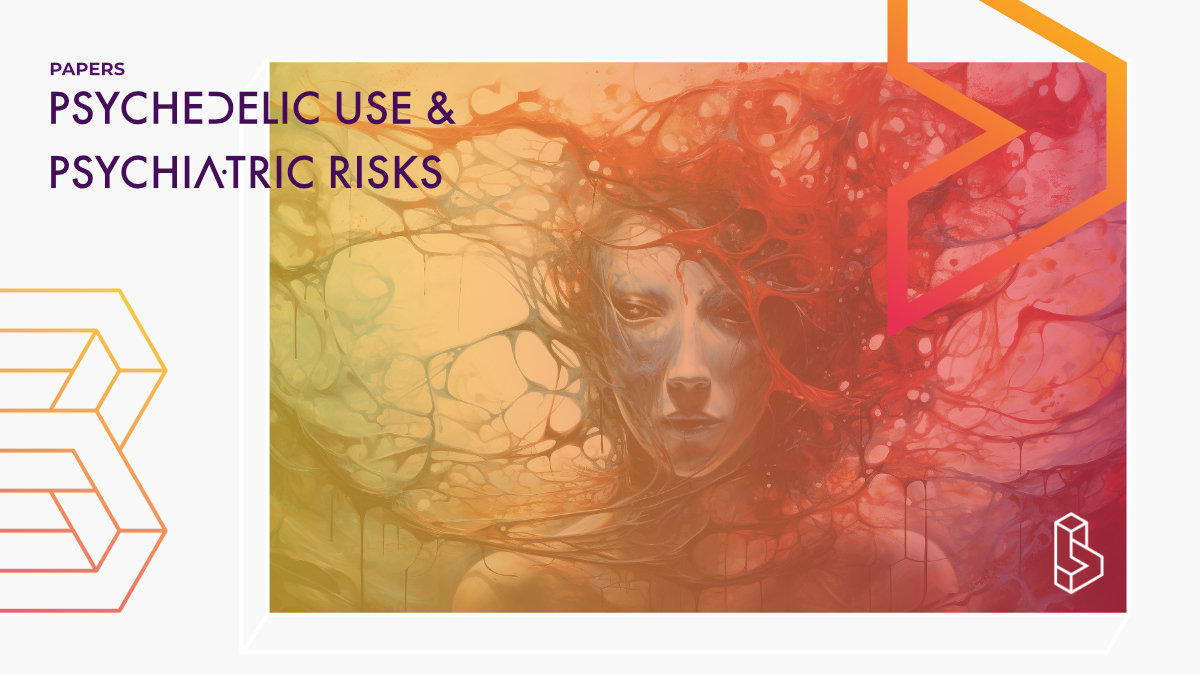This epidemiological study (n=2822, n=613 with lifetime psychedelic use) explored associations between naturalistic psychedelic use and psychiatric risks in a US adult sample. Findings showed lifetime psychedelic use linked with more unusual visual experiences throughout life but no direct connection to recent psychotic symptoms. An interaction between lifetime psychedelic use and family history of psychotic or bipolar disorders revealed higher recent psychotic symptoms in individuals with both factors, and lower symptoms without such family history.
Abstract of Psychedelic use and psychiatric risks
“Rationale Research on psychedelics has recently shown promising results in the treatment of various psychiatric disorders, but relatively little remains known about the psychiatric risks associated with naturalistic use of psychedelics.
Objective The objective of the current study was to investigate associations between naturalistic psychedelic use and psychiatric risks.
Methods Using a sample representative of the US adult population with regard to sex, age, and ethnicity (N=2822), this study investigated associations between lifetime naturalistic psychedelic use, lifetime unusual visual experiences, and past 2-week psychotic symptoms.
Results Among respondents who reported lifetime psychedelic use (n=613), 1.3% reported having been told by a doctor or other medical professional that they had hallucinogen persisting perception disorder. In covariate-adjusted linear regression models, lifetime psychedelic use was associated with more unusual visual experiences at any point across the lifetime, but no association was observed between lifetime psychedelic use and past 2-week psychotic symptoms. There was an interaction between lifetime psychedelic use and family (but not personal) history of psychotic or bipolar disorders on past 2-week psychotic symptoms such that psychotic symptoms were highest among respondents who reported lifetime psychedelic use and a family history of psychotic or bipolar disorders and lowest among those who reported lifetime psychedelic use and no family history of psychotic or bipolar disorders.
Conclusions Although the results in this study should be interpreted with caution, the findings suggest that lifetime naturalistic use of psychedelics might be associated with more unusual visual experiences across the lifetime, as well as more psychotic symptoms in the past 2 weeks for individuals with a family history of psychotic or bipolar disorders and the reverse for those without such a family history. Future research should distinguish between different psychotic and bipolar disorders and should also utilize other research designs (e.g., longitudinal) and variables (e.g., polygenic risk scores) to better understand potential cause-and-effect relationships.”
Authors: Otto Simonsson, Simon B. Goldberg, Richard Chambers, Walter Osika, Charlotta Simonsson & Peter S. Hendricks
Summary of Psychedelic use and psychiatric risks
Research on psychedelics has shown promising results in the treatment of various psychiatric disorders, but little remains known about the range of possible adverse events. It is, therefore, important to further investigate potential risks associated with psychedelic use.
A potential risk of psychedelic use is visual hallucinations or flashback-type experiences occurring after the acute pharmacological effects have subsided. These experiences can be diagnosed as hallucinogen-persisting perception disorder (HPPD).
Psychedelic use may, in rare cases, provoke the onset of prolonged psychosis, but the evidence is mixed. There is also no evidence that psychedelic use is associated with a higher risk of psychotic disorders in populations with a genetic risk for certain psychiatric disorders.
Find this paper
Psychedelic use and psychiatric risks
https://doi.org/10.1007/s00213-023-06478-5
Open Access | Google Scholar | Backup | 🕊
Cite this paper (APA)
Simonsson, O., Goldberg, S. B., Chambers, R., Osika, W., Simonsson, C., & Hendricks, P. S. (2023, October 24). Psychedelic use and psychiatric risks - psychopharmacology. SpringerLink. https://link.springer.com/article/10.1007/s00213-023-06478-5
Study details
Topics studied
Population Surveys
Safety
Study characteristics
Longitudinal
Survey
Participants
2822
Humans

